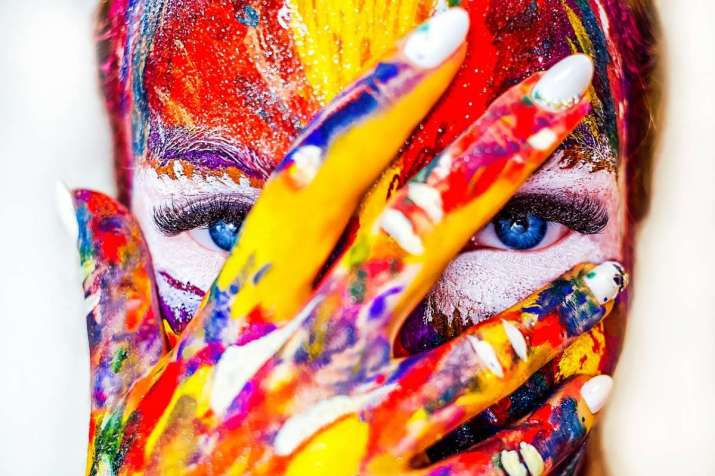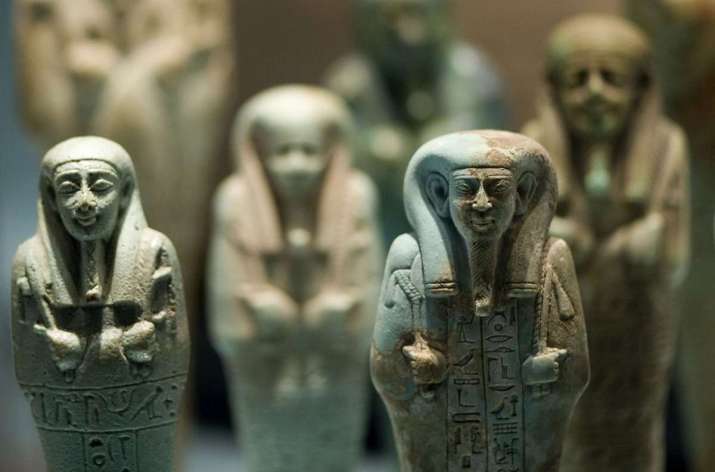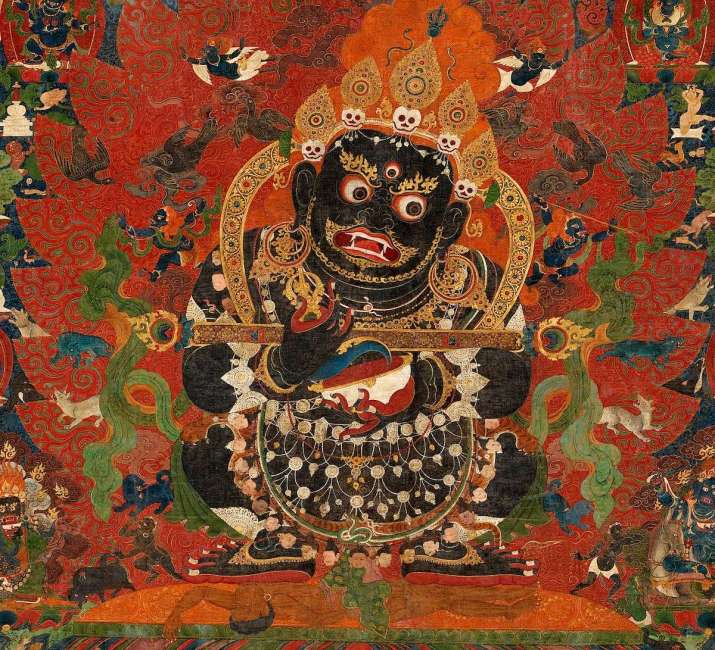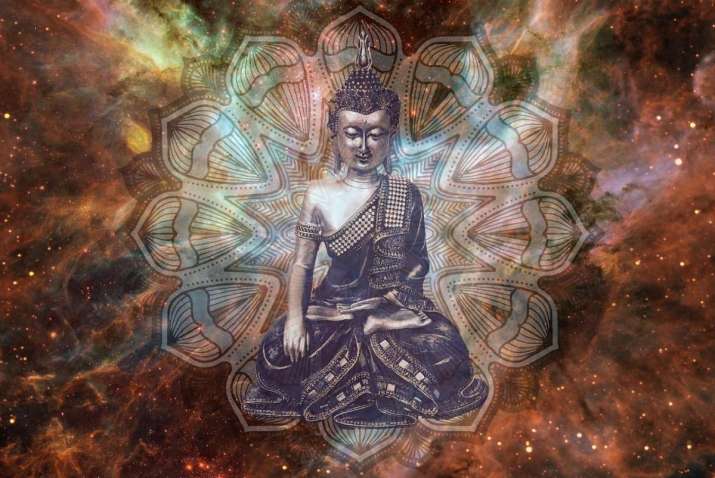FEATURES|COLUMNS|Silk Alchemy
Art, Magic, and Hidden Realms

Art [painting, writing, music, sculpture, or any other form] is, like magic, the science of manipulating symbols, words, or images, to achieve changes in consciousness. . . . an artist or writer is the closest thing in the contemporary world that you are likely to see to a shaman. (Alan Moore)
One of my favorite quotes by the English writer and graphic novelist Alan Moore on the topic of magic and art, and one I’ve used here before. This is a man that many may not have heard of, yet he has influenced more people through his storytelling and art than many would realize.
Once upon a time, and for a rather long time, it was strongly believed that replicating a person's image took a part of their soul. This is still evident in some communities and their relationship with photographs. In early religious art, it was only once an enlightened person or saint was long beyond this earthly realm that they were, loosely, represented in art form.
But in the mists of ancient Egypt, there was apparently another practice in which the person’s representation was quite relevant indeed.
So, a step back in history and a flyby about shabti figures:
Before the shabti mini-me’s became funerary companions to do the deceased’s bidding in the afterlife, ancient Egyptian shabti were allegedly used by magicians in life for something far more active. They seem to have been created as an archetypal characteristic of what the magician wanted to attract. Evidence of this is found in the Pert Em Heru (The Book of Coming Forth By Day), ancient Egypt’s book of the dead. And more relevantly, certainly for this little muse of an essay, the idea that there is a connection between the viewer, the image, and a magical universe, and that this knowledge dates back a long time. A subject I have covered in more detail in other articles (links below) in this column.*
 Ancient Egyptian shabti. From wikimedia.org
Ancient Egyptian shabti. From wikimedia.org“Shabti” translates as the transformed body (image) of a person and “ka-tu,” the works of the mind. They were a physical creation with a mental intention. You are what you choose to focus on, is one way of looking at this practice of manifesting through imagery of an archetypal self.
While not a million miles from the liberation-through-seeing of thangkas and the apotheosis of theurgy, shabti magic could potentially be used to get up to more mischief. Not that we encourage that of course. Theurgy was a later magical practice to unite with the divine and was often expressed artistically. Thangkas help inspire, educate, and, if the energy of the piece is right, energetically radiate—even liberate. But a shabti figure, often with an appropriate inscribed text, represented an aspect or role of the creator in his or her likeness that was animated by their controlled thoughts and was going to do the magician’s bidding from inside the magical universe, whatever that bidding may be.
Similar to but differing from servitors, jinn, and possibly daimones and daemons, which, for the most part, were entities already said to exist, shabti figurines were physically created then had life-force channeled into them so that the subtle body of the tweaked effigy could work energetically on the other side. And unlike the aforementioned thangkas and practice of theurgy, shabti seemed to be typically created in three-dimensional form, although the concept was arguably the same as a two-dimensional version. The chosen archetype was created and the channeled energy left to work its magic to make it so. You want to be rich? Make a rich version of yourself, breathe life into it and let the shabti energy work on the other side to make it happen. Want a lover? Dress a shabti version of yourself as attractively as possible and let the shabti work its magic. You want to be an enlightened mystic? Well actually, that will involve your own learned wisdom and mindfulness, to be honest. No cutting corners when it comes to enlightenment, I’m afraid.
Creating an effigy of this sort is like creating our own homunculus with the exaggerated elements we wish for, rather than what we already have.
 Detail from a thankha for Mahakala, c. 1500. One of the most popular guardians in Tibetan Buddhism. Here he tramples a corpse while wielding a flaying knife and a blood-filled skull cup, signifying the destruction of impediments to enlightenment. From wikipedia.org
Detail from a thankha for Mahakala, c. 1500. One of the most popular guardians in Tibetan Buddhism. Here he tramples a corpse while wielding a flaying knife and a blood-filled skull cup, signifying the destruction of impediments to enlightenment. From wikipedia.orgMy modern brain does not have an issue with what the ancients called a magical universe, after all we can only recognize the most minuscule percentage of our own universe and reality. The futurist and science fiction author Arthur C. Clarke famously said:
Any sufficiently advanced technology is indistinguishable from magic.
Play with me for a brief moment and try this: you are face to face with a person from 200 years ago; now wow them with the all-knowing power of an Internet search via your smartphone. Global history at the press of a button! The latest discoveries in every science! Complex understanding of the human brain through to that of a fruit fly! Moving pictures and up-to-the-minute news of current events, and people from the other side of the planet communicating with you in real time! Watch animals all over the world, some that you could never have known to exist, doing the most extraordinary things! The best and the worst of humanity! Virtually explore the depths of the oceans and travel through the known galaxy! See the surface of Pluto and have pizza delivered to your door! What magical device is this that you hold in your hand? It’s a very smart phone indeed. What might your 200-year-old friend make of you?
So the magicians of the tech world have figured out how to move information through realms invisible to the human eye—and that’s a realm we actively do know about. It’s ours, so to speak. But scientists tell us that there is so much more out there that may or may not be “ours,” and we’re only just skimming the surface.
A strong argument can be made that our modern fixation with manifesting our reality via a trained mind, vision boards, and the act of focusing on desired images until our brains rewire and our mind interfaces with the invisible realms, otherwise known as the magical universe, are potentially very similar to the practices of our ancients. Sending powerful thoughts into the ether to attract what you want (or what you expect), then letting it go. As when our intention is honorable, self aware, and we wish to express specific aspects and archetypal traits of ourselves, or draw in the desired energy of a deity, or rewire our neurobiology, or ask a Godhead to manifest a dream, even the ancient Egyptians seemed to understand the power of the mind and they created magic to enter the unseen realms to manifest a desired result.
This is one of the most wondrous aspects of visual art and the responsibility of an archetypal artist, because there’s magic in the air and when we create we should be careful what we wish for, lest it come true . . .
Meditation on a specific image or on our little shabtis, the focused power of our mind interfacing with ineffable realms, seems to be something that has been known and used for a very long time.

I’d like to remind you of Alan Moore’s quote at the beginning of this essay. While we probably shouldn’t create and mentally instruct our own little shabtis to get up to too many naughty shenanigans, they are essentially a meditation upon the energy we most desire to express within ourselves and the elements in life we most wish to realize. And so it can be said for a lot of archetypal imagery. We are all magicians in our own way, but as icon artists, as magicians of archetypes, and as shamans of body and spirit in a contemporary world, the contemporary esoteric artist holds a responsibility to communicate something from behind the veil.
Magicians and shamans, indeed. Co-architects of the mind it seems, and facilitators of reality.
Choose your magician wisely!
* Art and Apotheosis (Buddhistdoor Global)
Beyond Gender: Seeking the Sublime in Sacred Art (Buddhistdoor Global)
Deconstructing Bridges and Forging New Highways with Dharma Art – Part Two (Buddhistdoor Global)
Related features from Buddhistdoor Global
The Missing Self in Buddhism and Psychology
Lore and Magic from the Straw Hut—The Long Path to Wisdom: Tales from Burma
Metta’s Magic Tricks
Kruti Shah: A Celebration of Nature and Spirit














